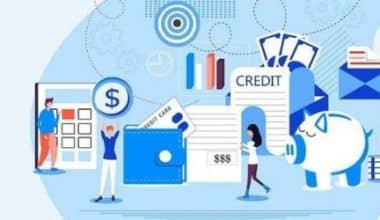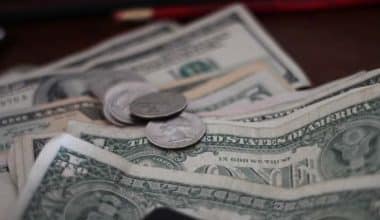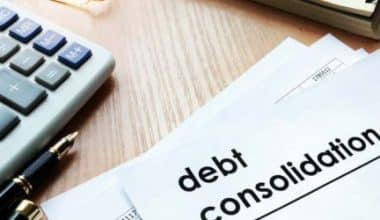A credit line loan is almost like the last option for people when they need money, mainly because of the interest rates involved. It does, however, have advantages that will be beneficial if you understand how it works. Here, we’ll learn how a credit line loan works and how you can apply online. We’ve also added a reference incase you need to use a credit line loan calculator.
What is A Credit Line Loan?
A credit line, sometimes known as a “line of credit” (LOC), is a sort of standing loan that allows individuals, corporations, or other organizations to borrow money when they need it, repay it, and continue lending without having to qualify for a new loan. A line of credit is sometimes known as an “evergreen loan” in some circles.
A credit line can be a credit card, a home equity line of credit (HELOC), or a small company credit line.
How Does A Credit Line Loan Work?
A line of credit is not the same as a standard loan. With the latter, you apply for a sum of money and repay it in installments over a predetermined period of time. You can’t keep borrowing money against the same debt.
On the other hand, a credit line is an application for regular access to cash when you need it. It’s commonly assumed that you can withdraw money multiple times.
These loans can often help you finish projects or conduct business when you don’t have the necessary funds on hand, but they can also be dangerous. When you take on debt and put off paying it off, you’re assuming you’ll be able to satisfy your obligations later.
Secured And Unsecured Credit Lines
Credit lines, like other loans, can be secured or unsecured. A secured loan requires you to put up a personal asset (or assets) as collateral, which the bank can seize if you default. A frequent secured credit line is a home equity line of credit. If you default on your loan, your HELOC lender will have a claim on that amount of your home’s equity.
In contrast, a credit card is an example of an unsecured credit line. Your card issuer provides you access to funds depending on your financial status and credit history rather than needing an asset as collateral. If you fall behind on your payments, your credit card company can send your account to collections, but it cannot seize any of your tangible property without suing you.
Revolving vs. Non-Revolving Credit Lines
Most lines of credit are revolving or open-end accounts that allow you to draw money up to the limit as long as you make payments according to the terms of your account. However, some are non-revolving or closed-end accounts. In some circumstances, once you have paid back the balance, you will no longer be able to draw funds. A HELOC may work in this manner after you enter the payback period, after which you will be unable to draw further cash.
Credit Line Loan Types
Credit lines can take various forms, each of which serves a distinct function.
A more traditional line of credit may have a fixed draw term during which you can draw money up to the maximum and make interest-only or interest-plus-principal payments. However, once you enter the repayment period, your balance is due in accordance with the repayment schedule you agreed upon with your lender.
A typical line of credit can be extended to either an individual or a corporation. Other credit lines available include:
Credit card: A personal account with a predetermined balance limit for revolving consumer spending. Any charges that are not paid off at the end of the month start accruing interest.
HELOC (home equity line of credit): A line of credit that uses your home equity as leverage to pay for house improvements. HELOCs can be used for a variety of purposes.
Business lines of credit: A bank or other lender’s line of credit that a company can utilize to cover critical expenses or operating costs.
The optimum line of credit for you will be determined by factors such as your personal or business credit rating, what collateral you have available (and want to) put up, and the purpose of your loan.
Advantages and Disadvantages of Credit Line Loans
Advantages
#1. Immediate cash availability
Businesses and individuals can obtain flexible cash as needed. A personal credit line can be useful for simple things like bank account overdraft protection.
#2. Borrow what you need
You are not required to borrow the total amount permitted. Instead, you can borrow only when necessary.
#3. Interest-only payments during the draw period
If you have a loan with a draw period, you can finance large projects without worrying about having to start repaying everything the next month. This can be a terrific way to finance a home remodel before you put it on the market, for example.
#4. Continue to borrow as needed
Rather than taking out a single loan and then applying for another when it is paid off, you can continue borrowing and repaying as needed.
Disadvantages
#1. Increased interest rates
A credit line’s interest rate is frequently substantially greater than that of a regular loan.
#2. Accumulated Interest
If you do not pay off the principal of your loan, interest payments will continue to accumulate. You may end yourself paying significantly more than the original loan amount.
#3. Can jeopardize assets
If you default on a secured line of credit, such as a HELOC, your assets may be at risk. Lenders have the authority to confiscate your property, business assets, residence, or other collateral. 2 Financial dangers: Credit lines, like any other type of borrowing, include financial hazards. If you rely on them without being able to repay the money you borrow, you may end up in serious debt.
#4. Unexpected alterations
The bank that issued your line of credit has the authority to cancel your LOC, reduce your limit, or adjust your interest rate at any moment.
Credit Limit vs. Credit Line
A credit line, also known as a HELOC or a credit card, is a sort of loan that allows you to borrow and repay money on a revolving basis.
A credit limit, on the other hand, is a lending characteristic. A loan’s credit limit is the maximum amount you can borrow or utilize at one time before you have to start repaying. For example, if your credit card has a $10,000 credit limit, the charges you make cannot exceed $10,000.
When you hit that limit, you must begin paying off your credit card amount before you can use it again.
How to Get a Credit Line
To receive a line of credit, you must apply in the same way that you would for any other loan. Lenders will decide whether to approve your application and set your borrowing limits depending on the following factors:
- Borrowingg history
- Credit rating
- Income available to repay the loan
- Assets that can be used as collateral
Before you take up a line of credit for yourself or your business, shop around for the best rate and terms. This includes ensuring that your credit rating is as strong as possible, avoiding other financial responsibilities, and, if you’re a business, maintaining good relationships with vendors.
If you have a credit line, don’t think of it as a cash lifeline that you can draw on whenever you want. To assist you in managing your credit line, you may be given a checkbook or a payment card that draws from your available money. It is critical to keep your interest payments under control by paying off your amounts on time.
A line of credit can be a useful tool in your financial arsenal, but it should be used with caution, just like any other loan. A loan should never be used to escape financial responsibility. Before you engage in debt, make sure you can afford to return it.
Lines of Credit vs. Other Types of Borrowing
There are many similarities between lines of credit and other types of lending, but there are also significant variances that borrowers must grasp.
Loans
A line of credit, like a regular loan, needs acceptable credit and repayment of the funds, and also charges interest on any monies borrowed. Taking out, using, and repaying a line of credit, like a loan, can increase a borrower’s credit score.
Unlike a loan, which is typically for a specific sum for a fixed period of time with a predetermined repayment schedule, a line of credit has more flexibility and, in most cases, a variable rate of interest.
When interest rates rise, your line of credit will cost more, which is not the case with a fixed-rate loan. There are also fewer limits on how cash obtained through a line of credit can be used. A mortgage must be used to purchase the specified property, and an auto loan must be used to purchase the stated car, but a line of credit can be used at the borrower’s option.
If you determine that a loan is the best option for you, locating the finest location to borrow might be especially difficult if you are in a financial emergency and need money quickly. Accessing cash quickly may appear even more difficult for those who have less-than-perfect credit. Fortunately, even if you have bad credit, there are a number of emergency loan choices available to you.
Pawn and Payday Loans
There are some superficial similarities between lines of credit and payday and pawn loans, however this is primarily because many payday or pawn loan borrowers are “frequent flyers” who borrow, repay, or extend their loans on a regular basis (paying very high fees and interest along the way). Similarly, a pawnbroker or payday lender doesn’t care what a borrower does with the funds as long as the loan is repaid and all fees are paid.
The discrepancies, however, are significant. The cost of cash for everyone who qualifies for a line of credit will be far lower than the cost of a payday or pawn loan. Similarly, the credit evaluation process for a payday or pawn loan is simpler and less demanding (there may be no credit check at all), and you get your funds much, much faster. In addition, payday lenders and pawnbrokers rarely offer large sums of money that are frequently accepted in credit lines. Banks, on the other hand, rarely bother with credit lines as tiny as the usual payday or pawn loan.
Is a Credit Line the Same As a Personal Loan?
Personal loans and personal lines of credit serve the same aim, but they operate in different ways. A personal loan gives you a large sum of money with a fixed monthly payment, whereas a line of credit gives you continuing access to funds.
Online Credit Line Loan
Tired of having to apply for online loans every time you need a little additional cash? What if you could keep extra cash on hand in case you run out of money or have a financial emergency? A Line of Credit enables you to accomplish just that. If accepted, you can withdraw funds from your available credit at any time with an online Line of Credit loan. You’ll have the option of making only the minimal installments or paying more to enhance your available funds.
How to Apply for a Credit Line Loan Online
In an emergency, a Line of Credit provides flexibility and quick access to finances. Here are steps on how you can apply for a credit line loan online:
#1. Apply Online
You can apply for a Line of Credit loan online 24 hours a day, seven days a week. If you require assistance, you can also call during business hours.
#2. Specify the Amount
Credit lines range from $200 to $2,500. Your credit limit will be determined by a variety of factors, including your state of residence, income, and the maximum limits permitted in your state of residence.
#3. Withdraw
If accepted, you can withdraw the entire credit limit allocated to you at once, or in lesser amounts as needed. The requested amounts from your Line of Credit are typically paid into your bank account on the same business day
#4. Line of Credit Cost
Depending on your state of residency, you will be charged based on the amount borrowed rather than your overall credit limit.
#5. Making a Payment
If you have an outstanding balance, you will receive a periodic statement prior to each due date, and you must pay a Minimum Payment. When you pay more than the Minimum Payment, you raise the total amount of credit available to you.
Is It Hard To Qualify For A Line Of Credit?
Unless you are a well-established firm or an individual with a great credit rating, it is normally difficult to obtain an unsecured line of credit. A long-term association with the bank or credit union is advantageous.
How Much Does Credit Line Cost?
Rates on credit lines can range from 7% to 20% and vary greatly. A credit line may also contain an annual fee that you must pay regardless of whether you use the available funds.
Credit Line Loan Calculator
For access to a credit line loan calculator, click here.
In Conclusion,
Credit lines, like any other financial product, are neither good nor bad inherently. It all depends on how people use them. On the one hand, excessive borrowing against a line of credit can lead to financial difficulty just as easily as excessive credit card spending. Lines of credit, on the other hand, might be cost-effective solutions to monthly financial fluctuations or executing a complex transaction such as a wedding or house remodeling. Borrowers should read the terms carefully (especially the fees, interest rate, and payback schedule), shop around, and don’t be hesitant to ask plenty of questions before signing.
Related Articles
- Can You Get a Credit Card With Your Current Credit Score?
- UNEMPLOYMENT PAYDAY LOAN: Can Unemployed People Get Payday Loans?
- Do Interest Rates Affect The Stock Market? How and Why?
- Best online payday loans: Top 10 companies in 2022






